Visit Chefchaouen – explore this cool blue city in Morocco’s Rif Mountains
I found my visit Chefchaouen to be an extraordinary experience in visiting the blue city for the first time. Coming across a vista point to seeing the city unfold during a bright sunny morning was quite surreal and yet so inviting to visit. After the vista point visit, we headed directly into town and were dropped off at one of the main gates and given some tips on where to eat, other great vista points and places to explore and shop in the blue city.
I’ve put together a quick guide on visiting Chefchaoen, key attractions, things to buy or take away foods along with places to eat around the city below.
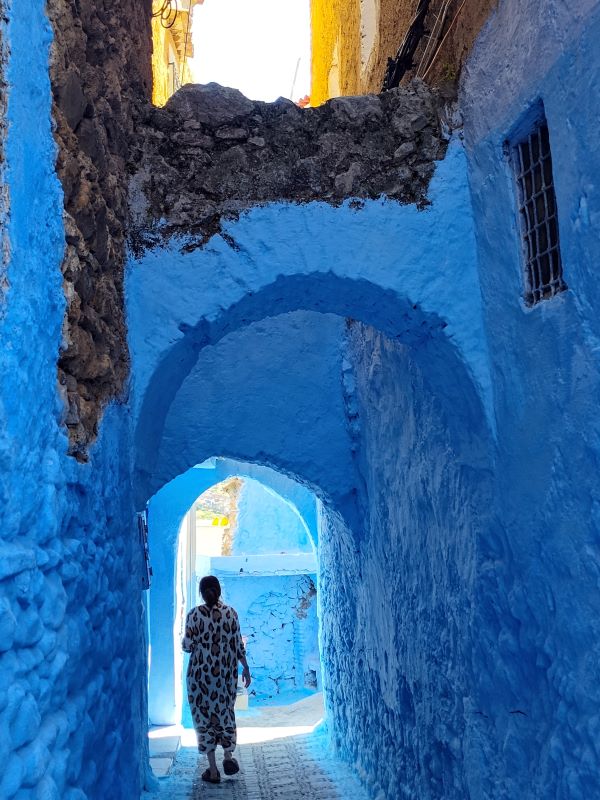
Why visit Chefchaouen
Chefchaouen, often called Morocco’s “Blue City,” is worth visiting for its striking blue-washed streets and relaxed mountain-town atmosphere. Tucked in the Rif Mountains, it offers a slower pace compared to Morocco’s bigger cities, making it a refreshing escape. The medina is compact and walkable, filled with local artisan shops, quiet plazas, and cafes where you can enjoy mint tea while watching daily life unfold. It’s also a great base for light hikes in the surrounding hills and nature trails. Whether you’re into photography, food, or simply soaking in a unique setting, Chefchaouen delivers a blend of charm and authenticity that’s hard to find elsewhere.
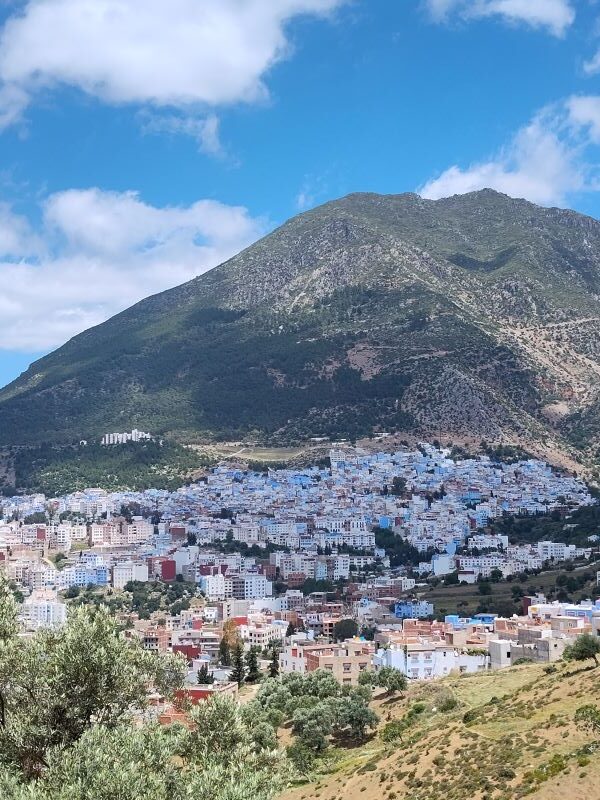
Where is Chefchaouen located and how to get there
Chefchaouen is located in northern Morocco, in the Rif Mountains. It’s about 110 km southeast of Tangier and 190 km north of Fes. While it feels remote, getting there is fairly straightforward, though it takes some time.
Here’s how to get there;
Here’s an outline of the transportation options to get to Chefchaouen, we also offer group tours of the city so you don’t have to think about logistics and have a knowledgeable guide to show you around.
From Tangier:
- Bus:
- CTM or local buses
- Duration: ~2.5 to 3 hours
- Departs from main bus terminals
- Shared Grand Taxi:
- More flexible departure times
- Slightly faster than bus
- Can be cramped
- Private Car or Driver:
- Most comfortable and flexible
- Ideal for groups or those on a schedule
From Fes:
- Bus:
- CTM or other operators
- Duration: ~4 to 5 hours
- Advance booking recommended
- Private Transfer:
- Good for comfort and direct travel
- Can be arranged through hotels or tour agencies
From Casablanca or Marrakech:
- Train + Bus Combo:
- Take a train to Tangier or Fes, then transfer to a bus
- More manageable than a long direct drive
- Long-Distance Bus:
- Possible but very long (8–10+ hours)
- Not the most comfortable option
- Private Car (with overnight stop):
- Best with a break in Fes or Rabat
- Flexible and scenic, but time-consuming
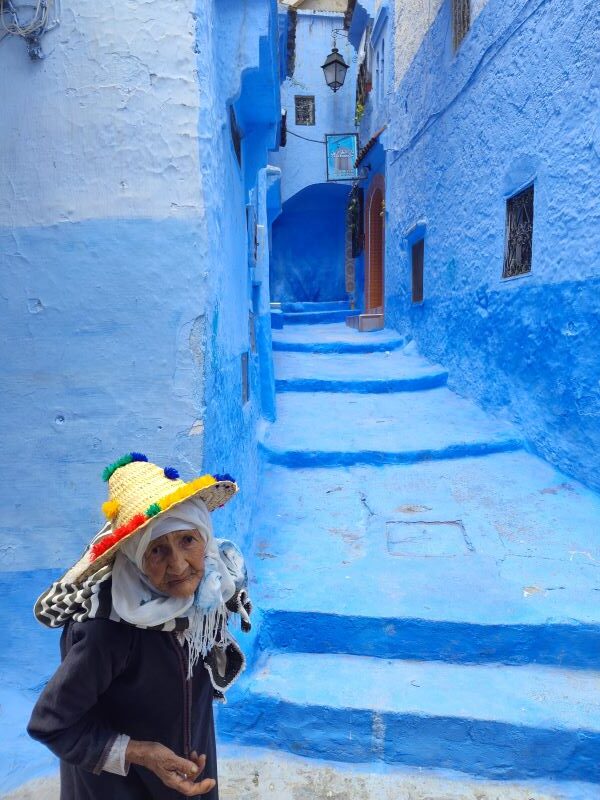
A brief history of Chefchaouen
Chefchaouen was founded in 1471 as a small fortress town by Moulay Ali Ben Moussa Ben Rached El Alami, originally to defend against Portuguese invasions from the north. Over time, it grew as a refuge for Muslims and Jews fleeing the Reconquista in Spain, especially after the fall of Granada in 1492. This mix of Andalusian and Moroccan culture shaped the town’s architecture, layout, and traditions. The signature blue color that now defines Chefchaouen’s walls is believed to have been introduced by Jewish refugees in the 1930s, symbolizing peace or spirituality. For centuries, it remained isolated and off-limits to foreigners until the 20th century, preserving its distinct character and slower pace of life.
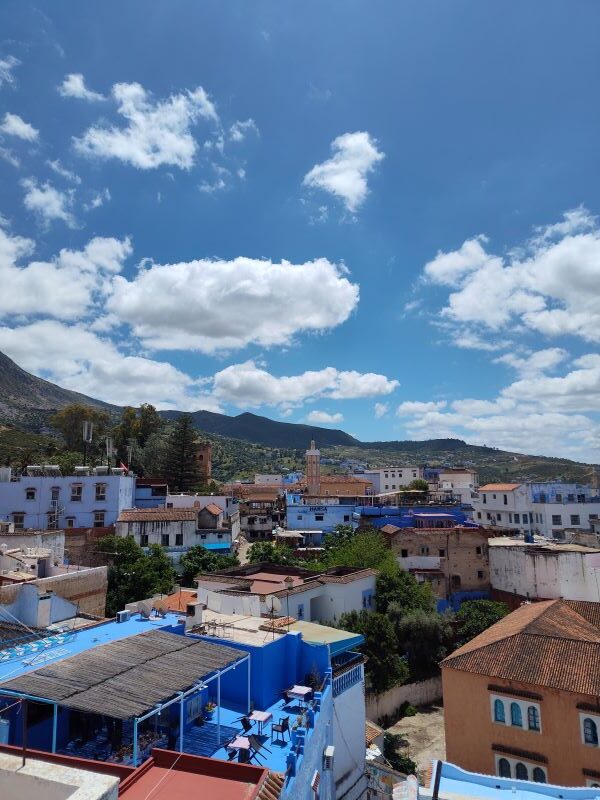
Top attractions and places to visit
Here’s an outline of the top attractions and places to visit in Chefchaouen:
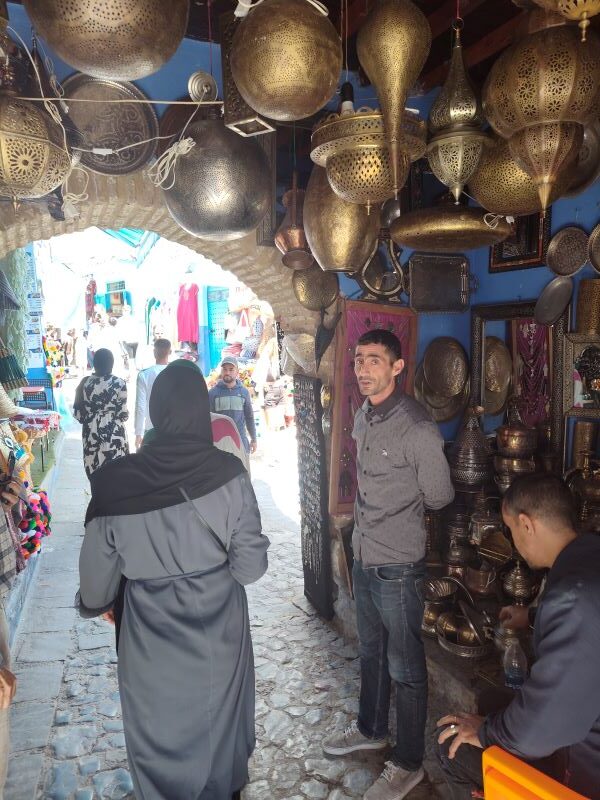
1. The Medina
The Medina of Chefchaouen is a compact, maze-like old town known for its narrow streets and walls painted in various shades of blue. It’s a peaceful place to wander, with a mix of small shops, local homes, and cozy cafes. The medina feels less crowded and touristy than those in bigger Moroccan cities, giving it a laid-back, authentic vibe. Here, you can discover handcrafted goods, traditional textiles, and local art while soaking in the unique atmosphere created by the town’s mountain setting and distinctive colors.
- Blue-painted streets and buildings
- Small shops selling handicrafts, wool garments, and local art
- Ideal for photography and wandering
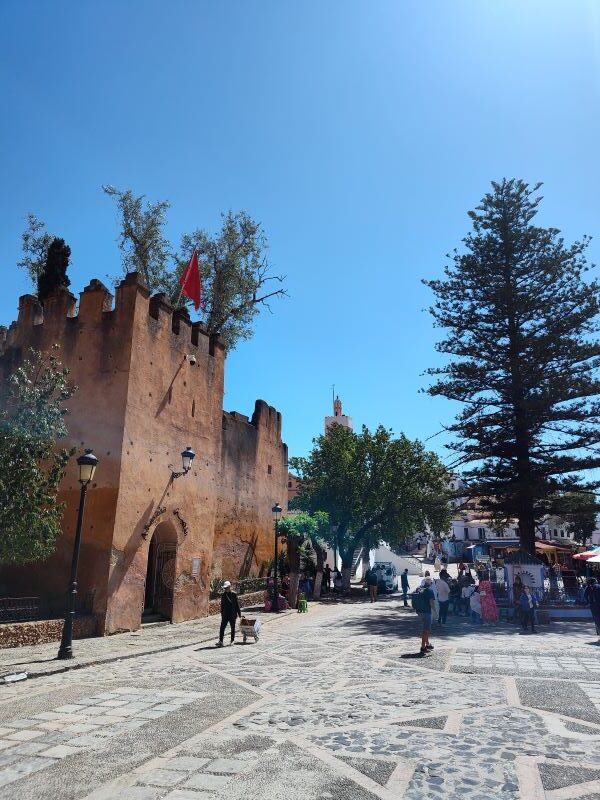
2. Plaza Uta el-Hammam
Plaza Uta el-Hammam is the main square in Chefchaouen and the heart of activity in the medina. Surrounded by cafes, restaurants, and key landmarks like the Kasbah and the Grand Mosque, it’s a central meeting spot for both locals and visitors. The square has a relaxed vibe, with shaded seating areas and views of the surrounding blue buildings and mountain backdrop. It’s a great place to take a break, try some Moroccan mint tea or tagine, and watch the rhythm of daily life unfold. Whether you’re starting your walk through the medina or winding down after exploring, the plaza offers a welcoming, social atmosphere.
- Central square of the medina
- Surrounded by cafes and restaurants
- Great place to relax and people-watch
3. Kasbah Museum
The Kasbah Museum in Chefchaouen is a small but interesting historical site located right off the main square, Plaza Uta el-Hammam. Housed in a restored 15th-century fortress, the museum offers a quiet escape from the busy medina. Inside, you’ll find a modest collection of local artifacts, traditional clothing, old photographs, and exhibits on the region’s history and culture. There’s also a peaceful Andalusian-style garden and a tower you can climb for a view over the blue rooftops and surrounding hills. It’s not a large museum, but it gives some context to the town’s past and is worth a short visit.
- Restored fortress in the main square
- Includes a small ethnographic museum and Andalusian-style garden
- Offers a short climb for views over the medina
4. Grand Mosque
The Grand Mosque of Chefchaouen, located in the central Plaza Uta el-Hammam, is the town’s oldest mosque and a key religious landmark. Built in the late 15th or early 16th century, it is attributed to either Moulay ‘Ali ibn Rashid al-Alami or his son, Mohammed. The mosque is particularly notable for its octagonal minaret—a distinctive feature influenced by Andalusian architecture, setting it apart from the more common square minarets found throughout Morocco .
The mosque complex includes a courtyard, prayer hall, ablutions chamber, and a madrasa that historically offered lessons in religious sciences. While the interior is not open to non-Muslims, the mosque’s exterior, with its red and ochre tones, contrasts beautifully with the surrounding blue-painted buildings of the medina. Its presence contributes significantly to the town’s cultural and architectural heritage
- Located in the main square
- Not open to non-Muslims, but the exterior architecture is worth seeing
- Unique octagonal minaret
5. Ras El Maa Waterfall
Ras El Maa Waterfall is a serene natural spring located just outside Chefchaouen’s northeastern medina gate. The name “Ras El Maa,” meaning “head of water,” reflects its significance as the town’s primary water source. The waterfall cascades over rocky terrain, creating a tranquil atmosphere complemented by lush greenery. Locals often gather here to wash clothes, adding to the authentic charm of the spot. Visitors can enjoy the soothing sounds of flowing water, relax on nearby benches, and capture the picturesque scenery. It’s a peaceful retreat offering a glimpse into daily life in Chefchaouen.
- Located just outside the medina’s eastern gate
- Popular local spot for cooling off or relaxing by the water
- Good starting point for short hikes
6. Spanish Mosque (Mosquée Bouzâafar)
The Spanish Mosque, or Bouzafer Mosque, sits on a hill overlooking Chefchaouen and offers sweeping views of the town and surrounding Rif Mountains. Built in the 1920s during Spanish colonial rule, it was intended to serve the local Muslim population but was largely rejected by residents and fell into disuse. Though no longer active as a place of worship, the mosque has become a popular spot for visitors seeking panoramic views, especially at sunrise or sunset. The hike to the mosque takes about 45 minutes from the medina, passing through local scenery and offering a peaceful retreat from the town below.(Morocco Pass)
- Located on a hill overlooking the town
- Accessible via a 30–45 minute hike
- Offers panoramic views, especially at sunset
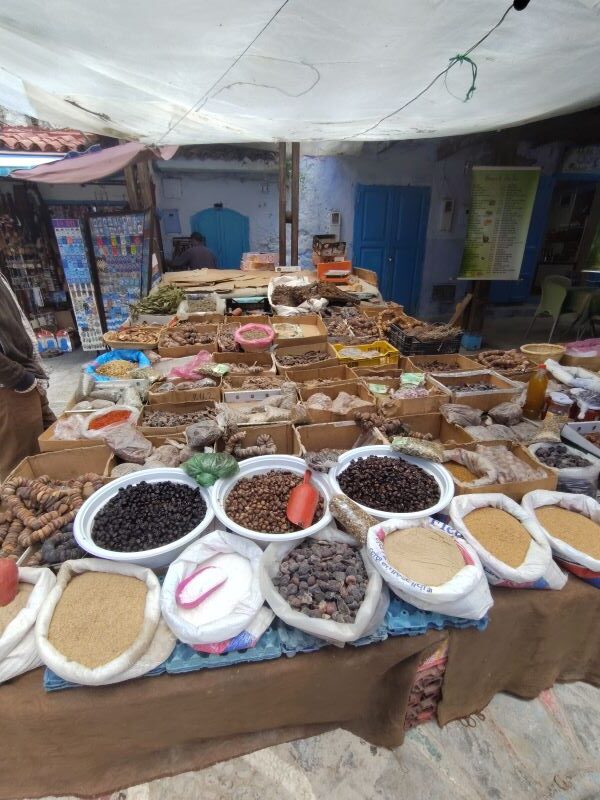
7. Local Souks (Markets)
The local souks (markets) in Chefchaouen are mainly found within the medina, especially around and beyond Plaza Uta el-Hammam. The narrow alleys are lined with small shops and market stalls selling a mix of everyday goods and locally made items like woven blankets, wool garments, leather goods, spices, and ceramics. On Mondays and Thursdays, the town hosts its traditional market days when farmers and vendors from nearby villages come in to sell fresh produce, herbs, and other regional products. These souk days offer a more local feel, with less tourist-oriented items and a glimpse into daily life in the Rif region.
- Held weekly (usually Monday and Thursday)
- Great for seeing local produce, textiles, and crafts
- More local and less touristy than larger cities
8. Akchour and Talassemtane National Park (Day Trip)
- About 45 minutes by car
- Known for scenic hikes, waterfalls, and mountain landscapes
- Popular with nature lovers and hikers
Here’s a map location to Talassemtane Natonal Park here for more details.
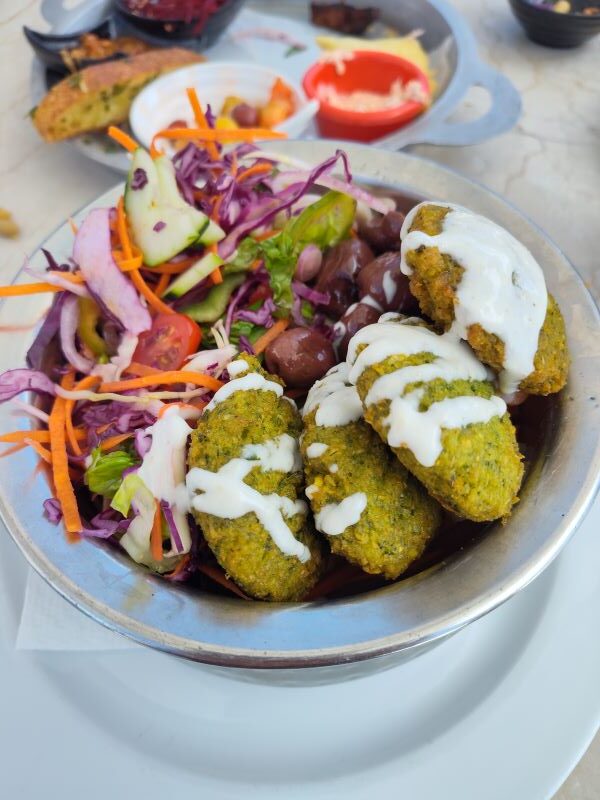
Local foods to try
If you are hungry and starting to check out all the menu’s around town, here’s a quick look at local favorite foods to try around town
Here’s a list of local foods to try in Chefchaouen:
Local Foods to Try in Chefchaouen
- Tagine
- Slow-cooked stew made with meat (often lamb or chicken), vegetables, and spices
- Served with bread or couscous
- Couscous
- Steamed semolina grains usually served with meat and vegetable stew
- A traditional Moroccan staple
- Bissara
- A thick, warming fava bean soup or puree
- Commonly eaten for breakfast, especially in colder months
- Pastilla (Bastilla)
- A sweet and savory pie made with layers of thin pastry, pigeon or chicken, almonds, cinnamon, and sugar
- A special dish often served at celebrations
- Harira
- A hearty tomato and lentil soup flavored with herbs and spices
- Often enjoyed during Ramadan but available year-round
- Mint Tea
- Sweet Moroccan green tea brewed with fresh mint leaves
- Served throughout the day as a welcoming gesture
- Maakouda
- Fried potato cakes seasoned with herbs and spices
- Popular street food or appetizer
- Fresh Bread (Khobz)
- Locally baked bread often served alongside meals
- Essential for scooping up tagines and stews
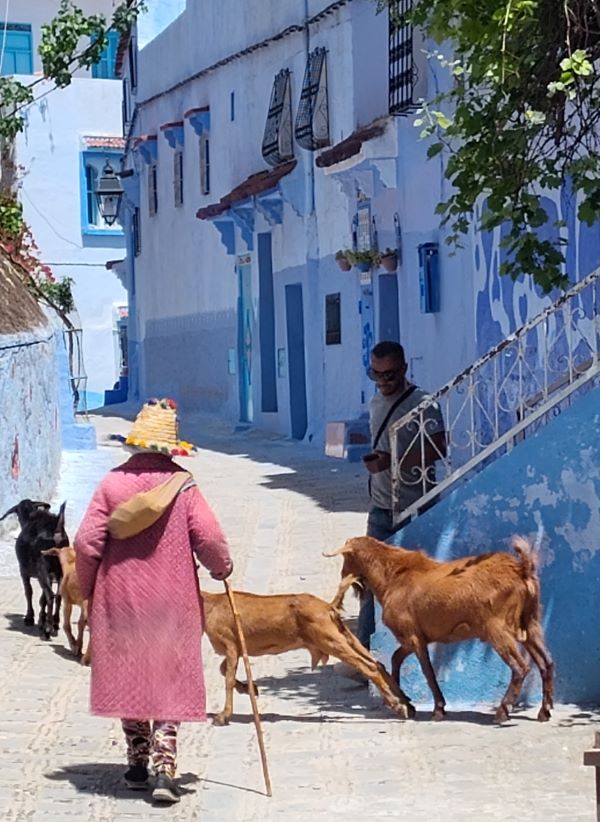
Last-Minute Tips for Visiting Chefchaouen
Here are some last-minute tips for visiting Chefchaouen:
- Pack Comfortable Shoes
- Streets are cobblestone and often steep, so wear sturdy, comfortable footwear for walking and hiking.
- Carry Cash
- Many small shops and cafes don’t accept cards; ATMs are available but not always reliable.
- Dress Modestly
- Respect local customs by dressing conservatively, especially when visiting religious sites.
- Stay Hydrated
- Bring a water bottle—especially if you plan to hike or explore outside the town.
- Learn Basic Arabic or French Phrases
- Locals often speak Arabic and French; knowing simple greetings and phrases helps.
- Be Ready to Haggle
- Bargaining is common in markets, so don’t hesitate to negotiate prices politely.
- Visit Early or Late in the Day
- To avoid the heat and crowds, explore the medina in the morning or late afternoon.
- Respect Photography Rules
- Always ask permission before photographing locals or inside religious sites.
- Try Local Food Carefully
- If you have a sensitive stomach, eat at reputable places and avoid street food that looks questionable.
- Plan Your Transport in Advance
- Arrange your bus or taxi rides ahead, especially if traveling during peak tourist seasons.
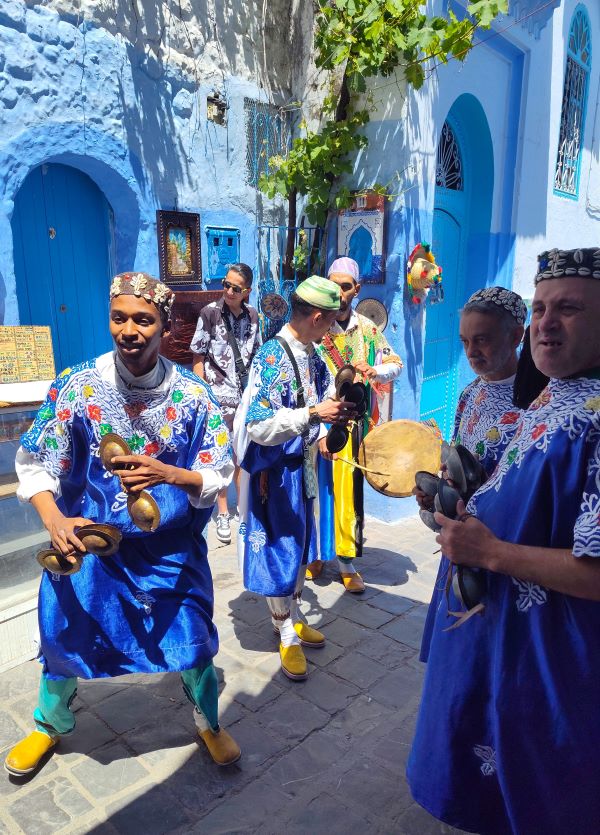
Guided tours
Leave all the details, driving, parking and a knowledgeable guide to really show you around the city, the best views, places to shop, eat and inside scoop. Here’s some recommendations
From Tangier: Chefchaouen Day Trip with Local Guide
Discover the blue city of Chefchaouen on a day tour from Tangier, with pickup and drop-off. Enjoy a guided tour through the charming streets and learn about local history.
Blue City magic: Affordable Day Trip from Fez to Chefchaouen
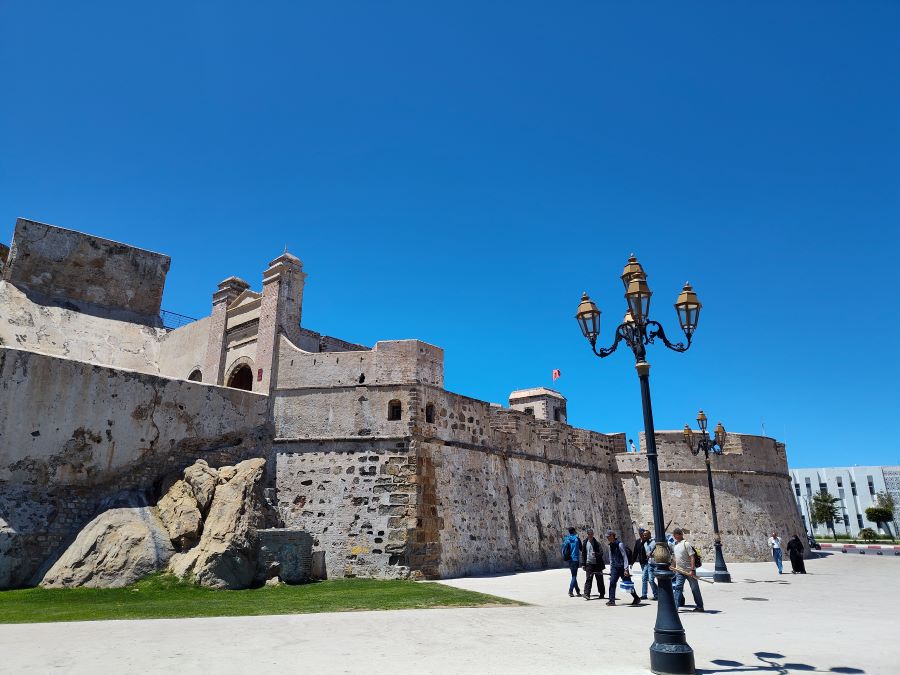
Further reading on Morocco
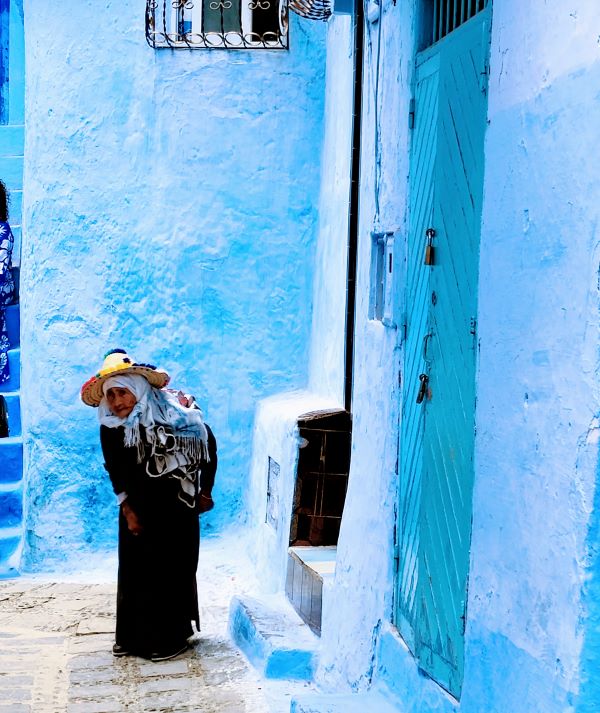
Conclusion to visiting
Visiting Chefchaouen offers a chance to experience a side of Morocco that feels both timeless and welcoming—a place where vibrant blue streets meet mountain air and rich culture. Whether you’re wandering the medina, tasting local dishes, or taking in the views from the Spanish Mosque, the town leaves a lasting impression. If you’re looking for a destination that combines history, nature, and a relaxed pace, Chefchaouen should be at the top of your list. Start planning your trip today and discover why this unique mountain town continues to captivate travelers from around the world.
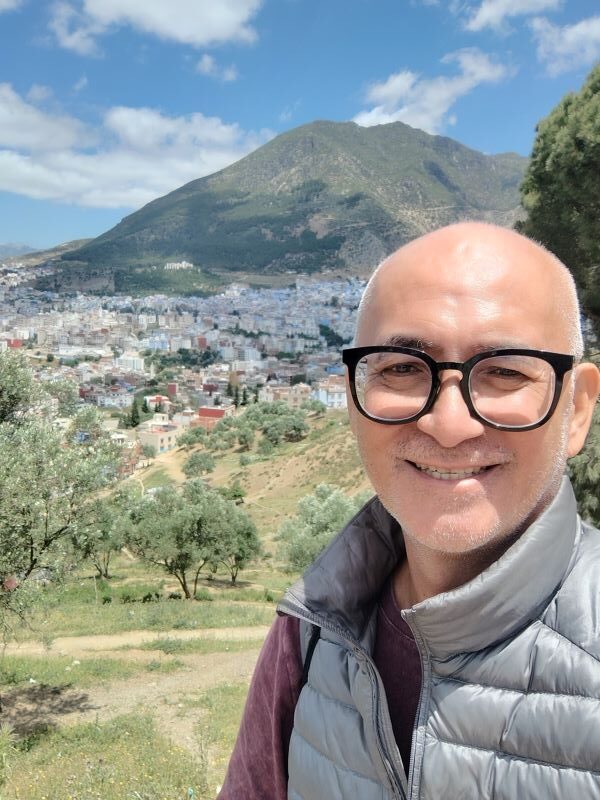
About author – Noel Morata
After relocating from the United States to Andalusia in 2024, I’ve made it my mission to discover every corner of Spain along with many Mediterranean locations, cities and attractions. Based just east of Granada, I’ve spent a lot of time visiting Morocco including multiple extended visits to Marrakesh, Tangier, Chefchaoen and different parts of the country throughout different seasons. My background in history cultural studies and years of residence and exploring all of the Mediterranean countries have given me unique insight into the region’s historical significance, local customs, and culinary traditions.
I regularly update my guides with the latest information gathered through personal visits and relationships with local tourism officials, always seeking what’s new and exciting in each destination. As a self-proclaimed foodie, I’m passionate about discovering authentic local markets and regional specialties.
Disclosure – some of the links above to various tours, transportation and hotels are affiliate links that benefits our site if you book here and we appreciate your support. The links are competitive, and you are not paying above what other affiliates provide.
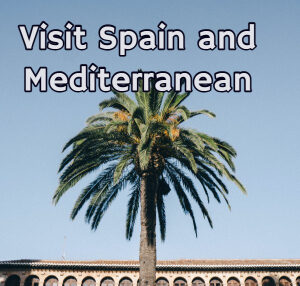

Great information, thanks I will use it on my forthcoming trip to Morocco .
thanks so much for the comment, you’ll love visiting Morocco all around the country